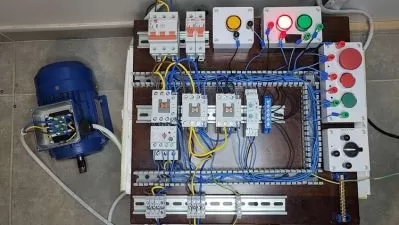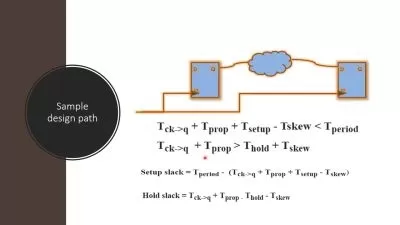The Beginner's Guide to Testing Electrical Circuits
Mitch Hegman
3:07:30
Description
Learn electrical circuit and test instrument basics and how to use them in any testing or troubleshooting task.
What You'll Learn?
- Students will learn the basics of electrical circuits and Ohm's Law
- Students will learn the types and functions of test instruments, highlighting digital multimeters
- Students will understand the relationship between electrical circuits and components and test instruments
- Students will learn the purpose, functions, and controls of digital multimeters
- Students will understand safe use of instruments when testing circuits and components
- Students will be able to apply the curriculum to real world testing and troubleshooting
Who is this for?
What You Need to Know?
More details
DescriptionThe Beginner's Guide to Testing Electrical Circuits combines clear explanations of electrical circuits, components, and values with detailed demonstrations and labs on using test instruments competently and safely. The instruction also covers common circuit and component troubleshooting and the role of a multimeter in that process.Â
Designed for students and beginners, the curriculum is also a great refresher and skill builder for those familiar with electrical testing. Whether you are a student, electrician, technician, engineer, or hobbyist, The Beginner's Guide to Testing Electrical Circuits will improve your knowledge and competence when using digital multimeters.
The instruction begins with lessons on basic electrical circuits, terminology, and theory, including Ohm's Law. These are then applied to test instruments and how they function. Also included are essential safety precautions and step-by-step test procedures. Basic testing tools are demonstrated, primarily focusing on the digital multimeter. Students should have access to a meter to replicate and practice testing procedures included in the training.Â
The instructor, Mitch Hegman, is both a practicing master electrician and a professional instructor. Mitch understands electrical testing from both a practical and educational perspective and applies a combination classroom and "in-the-field" approach to his teaching. And early course lessons introduce and allow students to begin using and practicing with their meters as they learn about circuits and components.Â
Who this course is for:
- Electricians (all levels), technicians, handymen and women, DIY and hobbyists, STEM students
The Beginner's Guide to Testing Electrical Circuits combines clear explanations of electrical circuits, components, and values with detailed demonstrations and labs on using test instruments competently and safely. The instruction also covers common circuit and component troubleshooting and the role of a multimeter in that process.Â
Designed for students and beginners, the curriculum is also a great refresher and skill builder for those familiar with electrical testing. Whether you are a student, electrician, technician, engineer, or hobbyist, The Beginner's Guide to Testing Electrical Circuits will improve your knowledge and competence when using digital multimeters.
The instruction begins with lessons on basic electrical circuits, terminology, and theory, including Ohm's Law. These are then applied to test instruments and how they function. Also included are essential safety precautions and step-by-step test procedures. Basic testing tools are demonstrated, primarily focusing on the digital multimeter. Students should have access to a meter to replicate and practice testing procedures included in the training.Â
The instructor, Mitch Hegman, is both a practicing master electrician and a professional instructor. Mitch understands electrical testing from both a practical and educational perspective and applies a combination classroom and "in-the-field" approach to his teaching. And early course lessons introduce and allow students to begin using and practicing with their meters as they learn about circuits and components.Â
Who this course is for:
- Electricians (all levels), technicians, handymen and women, DIY and hobbyists, STEM students
User Reviews
Rating
Mitch Hegman
Instructor's Courses
Udemy
View courses Udemy- language english
- Training sessions 30
- duration 3:07:30
- Release Date 2023/06/24
















